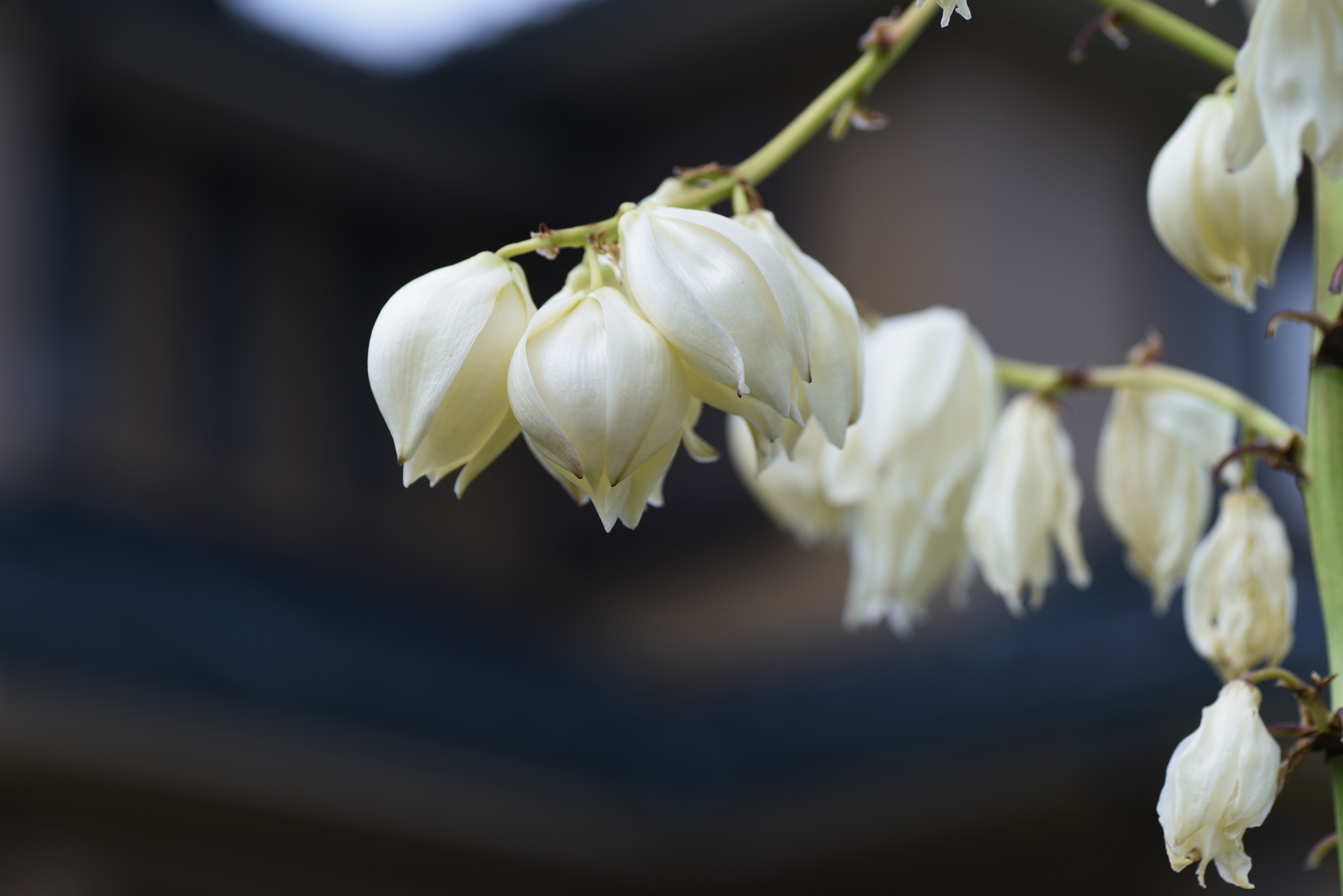Flowers are a great way to express love and admiration for your loved ones. Their vibrant colors and attractive shapes signify the various spiritual meanings while decorating our homes and hearts.
In this guide, we’ll cover all the flowers that start with Y as well as their native range. So, keep on reading!
List of Flowers that Start with the Letter Y
- Yellow archangel (Lamium galeobdolon)
- Yellow coneflower (Echinacea paradoxa)
- Yarrow (Achillea millefolium)
- Yew (Taxus baccata)
- Yellow flag (Iris pseudacorus)
- Yucca (Hesperaloe parviflora)
- Yellow daylily (Hemerocallis lilioasphodelus)
- Yellow pitcher plant (Sarracenia flava)
- Yellow wild indigo (Baptisia sphaerocarpa)
- Yellow-eyed grass (Sisyrinchium californicum)
Flowers that Start With Y
1. Yellow archangel (Lamium galeobdolon)
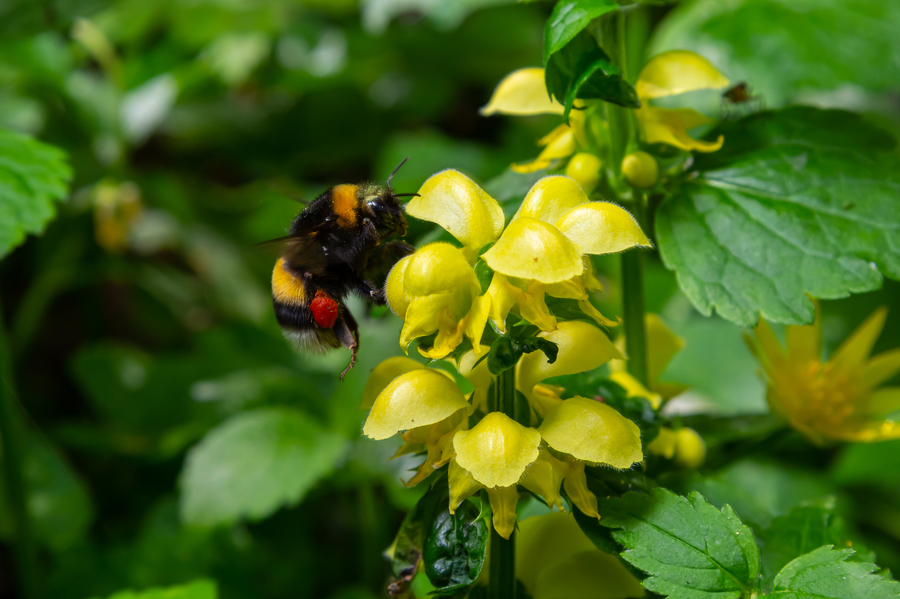
| Common name | Dead nettle, yellow archangel, golden dead nettle |
| Botanical name | Lamium galoeobdolon |
| Family | Lamiaceae |
| Plant type | Herbaceous perennial ground cover |
| Mature size | Grows to 1 to 2 feet tall and 1-2 feet wide |
| Native range | Europe to Iran |
| USDA hardiness zone | 4a, 4b, 5a, 5b, 6a, 6b, 7a, 7b, 8a, 8b, 9a, 9b |
| Growth rate | Fast grower |
| Growth habit | Creeping |
Also known as dead nettle and golden dead nettle, yellow archangel is a low-growing, herbaceous perennial that belongs to the mint family. These flowers that start with Y are grown as ornamental groundcover and hardy in the USDA hardiness zone 4-9.
Its flowers feature intensely glossy leaves covered with fine hairs. Some cultivars of this plant produce variegated leaves with silver markings and make the best ground cover with their creeping growth habit. One such cultivar is ‘Hermann’s Pride,’ which offers elliptical leaves with silver markings all over the leaf surface and serrated edges.
With its narrow and variegated leaves, this plant enhances the appeal of flowering plants.
2. Yellow coneflower (Echinacea paradoxa)
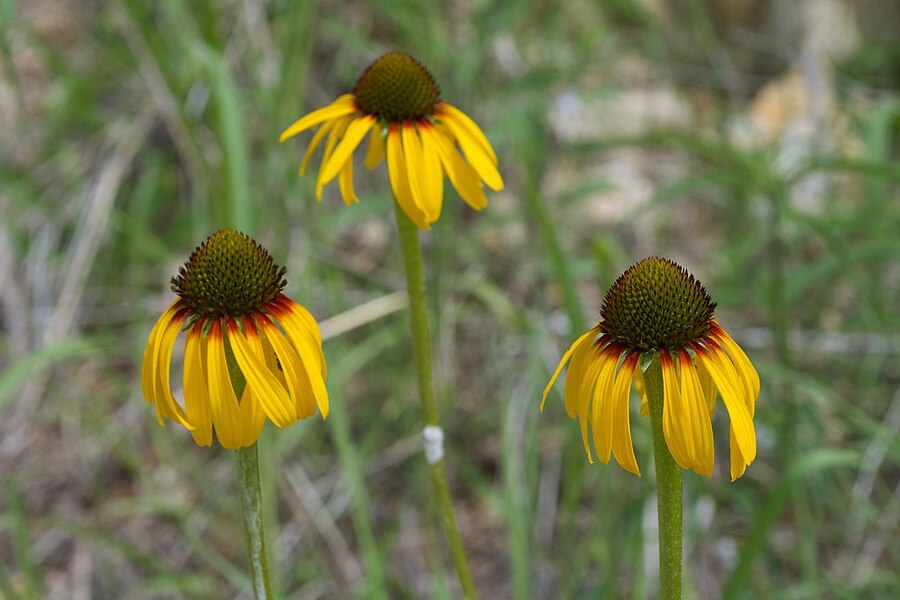
| Common name | Ozark coneflower, Bush’s coneflower, yellow coneflower |
| Botanical name | Echinacea paradoxa |
| Family | Asteraceae |
| Plant type | Perennial wildflower |
| Mature size | Grows to mature height of 2-3 feet tall and 1-2 feet wide |
| Native range | Central USA |
| USDA hardiness zone | 3a, 3b, 4a, 4b, 5a, 5b, 6a, 6b, 7a, 7b, 8a, 8b, 9a, 9b |
| Growth rate | Medium |
| Growth habit | Erect |
Yellow coneflower is native to Arkansas and Missouri. It is the only species in the genus Echinacea (purple coneflowers) that does not produce purple-colored flowers. Instead, this plant has brightly colored yellow flowers, hence the common name yellow coneflowers.
Also known as Ozark coneflower or Bush’s purple coneflower, Echinacea paradoxa has a deep taproot system, allowing it to survive poor soil conditions. However, it performs best in fertile soils and is hardy in the USDA hardiness zone 3 to 9.
3. Yarrow (Achillea millefolium)

| Common name | Dog fennel, Western yarrow, common yarrow, thousandleaf |
| Botanical name | Achillea millefolium |
| Family | Asteraceae |
| Plant type | Herbaceous perennial, groundcover, wildflower |
| Mature size | 1-3 feet tall and 1-3 feet wide |
| Native range | North America, western Asia, Europe |
| USDA hardiness zone | 3a, 3b, 4a, 4b, 5a, 5b, 6a, 6b, 7a, 7b, 8a, 8b, 9a, 9b |
| Growth rate | Rapid |
| Growth habit | Spreading |
Dog fennel or common yarrow is a herbaceous perennial of the Asteraceae or daisy family. It grows to a mature height of 3 feet with beautiful yellow flowers. This plant prefers fertile and well-drained soil and is native to Europe.
4. Yew (Taxus baccata)
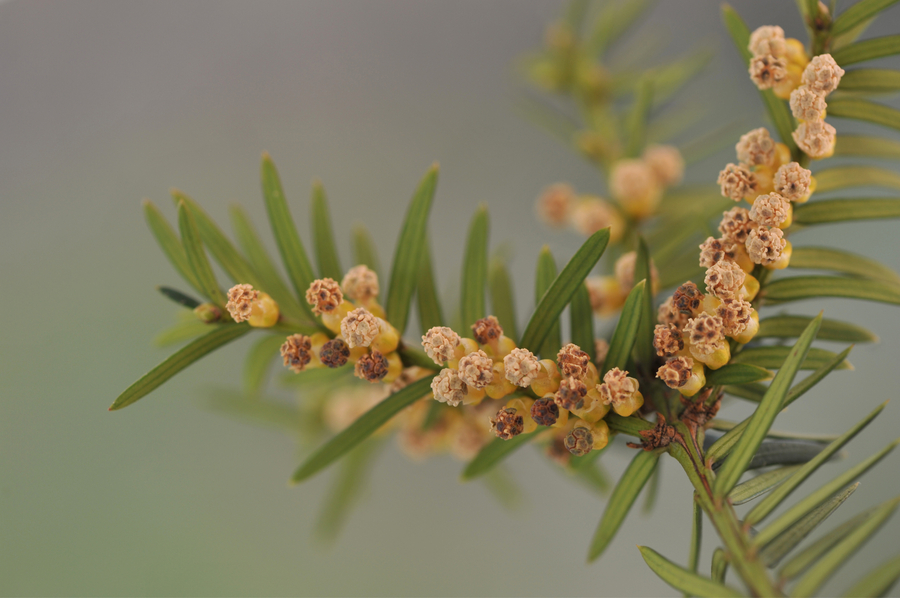
| Common name | European yew, English yew, common yew |
| Botanical name | Taxus baccata |
| Family | Taxaceae |
| Plant type | Shrub |
| Mature size | 30-60 feet tall and 15-25 feet wide |
| Native range | Europe, Northern Africa, Western Asia |
| USDA hardiness zone | 6a, 6b, 7a, 7b |
| Growth rate | Slow growing |
| Growth habit | Pyramidal |
English yew (Taxus baccata) is an evergreen perennial or small shrub that reaches a mature size of 30 to 60 feet tall and 25 feet wide. It has creeping branches densely covered with needle-like leaves and offers golden/yellow flowers in fall.
Note: This plant is toxic because of taxines; so extra care and protection must be taken when handling it. Wear gloves and safety clothes during pruning and propagation.
5. Yellow flag (Iris pseudacorus)
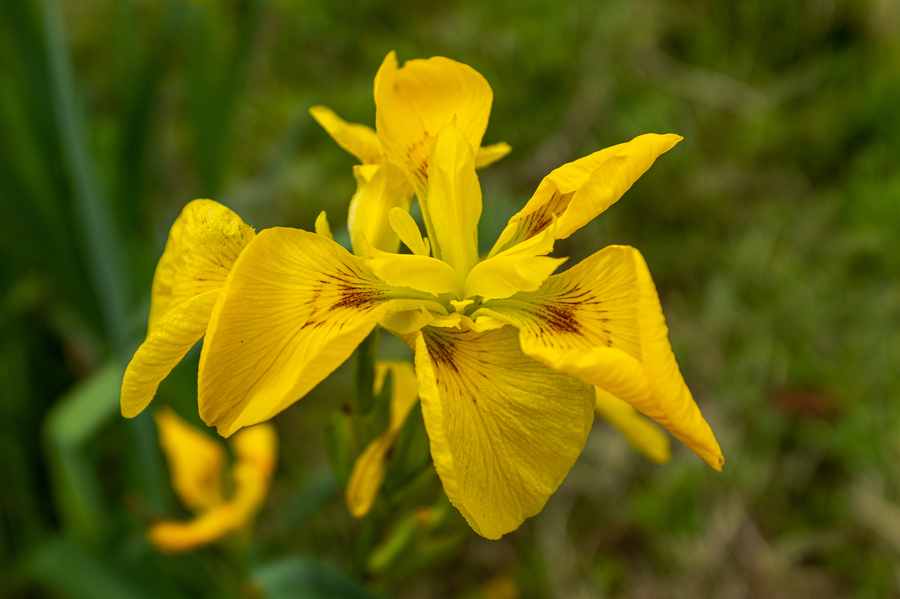
| Common name | Yellow flag iris, yellow flag |
| Botanical name | Iris pseudacorus |
| Family | Iradiaceae |
| Plant type | Perennial water plant |
| Mature size | Grows to a height of 3 feet |
| Native range | Europe, North Africa, western Asia |
| USDA hardiness zone | 5a, 5b, 6a, 6b, 7a, 7b, 9a, 9b |
| Growth habit | Clump forming |
| Growth rate | Fast |
The yellow flag iris is a perennial bulb native to Europe and Africa. This plant prefers to grow in wet soils, bog gardens, and water. When grown in damp soil, it spreads quickly through rhizomes and attains a mature size of 3 feet tall and 10 inches deep.
Showy flowers of bright yellow appear in spring that perfectly complement the sword-shaped leaves.
6. Yucca (Hesperaloe parviflora)
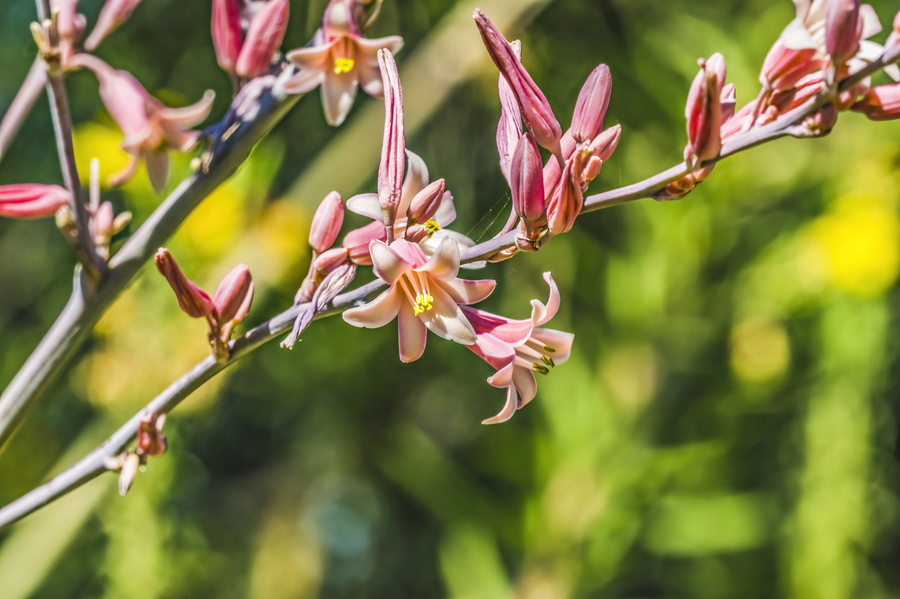
| Common name | Hummingbird yucca, red yucca, coral yucca, redflower false yucca |
| Botanical name | Hesperaloe parviflora |
| Family | Asparagaceae |
| Plant type | Perennial, succulent |
| Mature plant | 3-5 feet tall and 4-6 feet wide |
| Native range | Mexico, Texas, Coahuila |
| USDA hardiness zone | 6a, 6b, 7a, 7b, 8a, 8b, 9a, 9b, 10a, 10b |
| Growth habit | Spreading, clumping |
| Growth rate | Medium |
Coral yucca is native to Mexico and thrives best in warm, dry climates. When grown in home gardens, well-draining, sandy loam soils are the best to grow this warm-weather plant successfully. Its arching narrow leaves are evergreen and look great during the blooming season.
It blooms from summer to fall, offering gold/yellow flowers attracting pollinators and hummingbirds.
7. Yellow daylily (Hemerocallis lilioasphodelus)
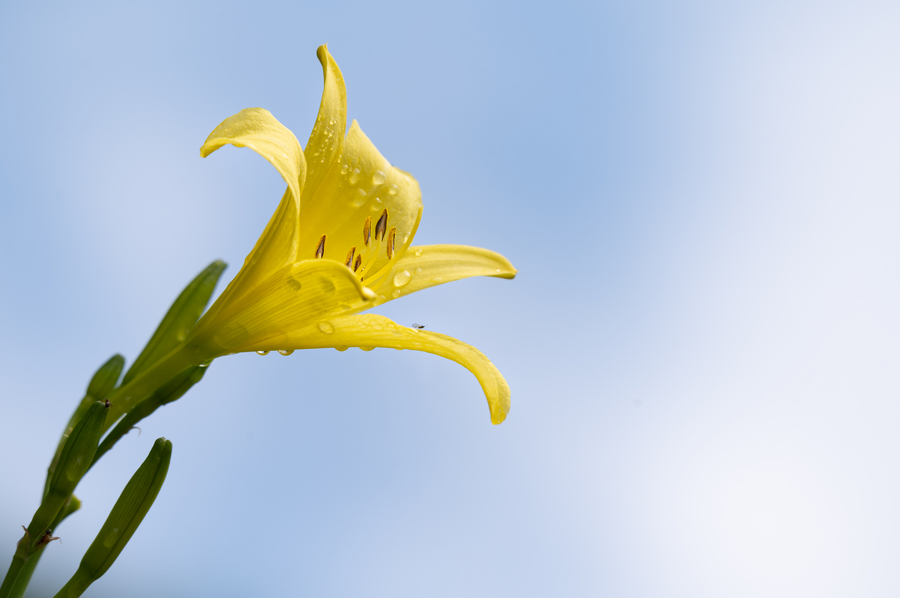
| Common name | Daylilies |
| Botanical name | Hemerocallis lilioasphodelus |
| Family | Hemerocallidaceae |
| Plant type | Herbaceous perennial, ground cover, bulb |
| Mature plant | Grows 1-3 feet tall and 1-3 feet wide |
| Native range | Asia |
| USDA hardiness zone | 3a, 3b, 4a, 4b, 5a, 5b, 6a, 6b, 7a, 7b, 8a, 8b, 9a, 9b |
| Growth rate | Medium |
| Growth habit | Arching, clump-forming, spreading |
Also known as grass-leaved daylily or dwarf yellow daylily, Hemerocallis minor is a clump-forming herbaceous perennial. It grows to 1-2 feet tall and produces bright yellow flowers from May to June with arching dark green leaves.
With its bright yellow flowers and arching dark green leaves, grass-leaved daylily makes the best groundcover for landscapes and cottage-style gardens.
8. Yellow pitcher plant (Sarracenia flava)
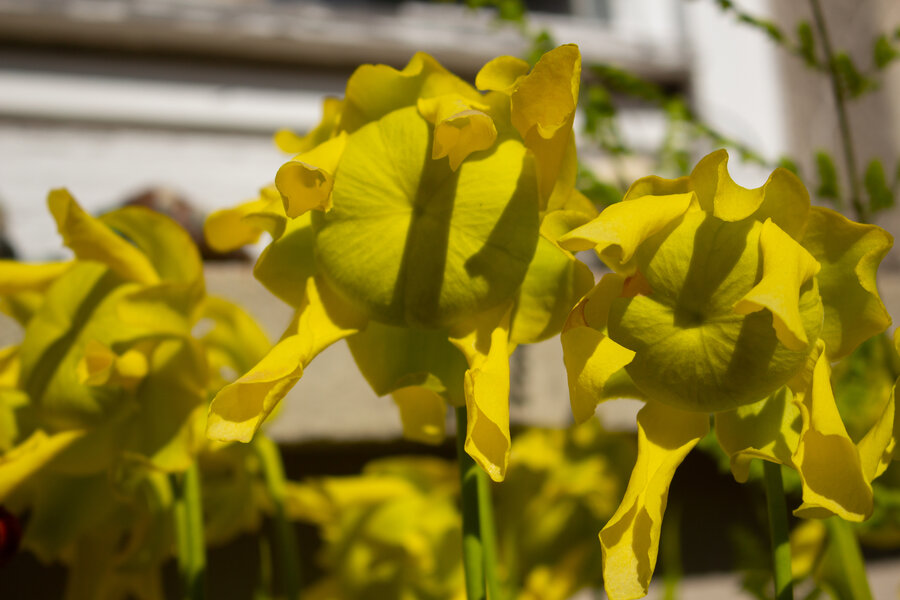
| Common name | Yellow trumpet, giant red tube, huntsman horn, trumpets |
| Botanical name | Sarracenia flava |
| Family | Sarraceniaceae |
| Plant type | Carnivorous herbaceous perennial |
| Mature plant | 1-3 feet tall and 1-3 feet wide |
| Native range | Southeastern United States |
| USDA hardiness zone | 6a, 6b, 7a, 7b, 8a, 8b, 9a, 9b |
| Growth rate | Fast |
| Growth habit | Clumping, erect |
The giant red tube is a carnivorous plant native to savannas, California, Georgia, and seepage bogs. It belongs to the genus Sarracenia in the Sarraceniaceae family and is hardy to the USDA hardiness zone 6 to 9.
It prefers to grow in wet soils, especially rich in sphagnum or peat moss, and low in nitrogen and sharp sand particles. These plants also do not like fertilizer applications and tap water because of their sensitivity to chlorine. So distilled or rainwater applications would be ideal for perfect growth.
9. Yellow wild indigo (Baptisia sphaerocarpa)
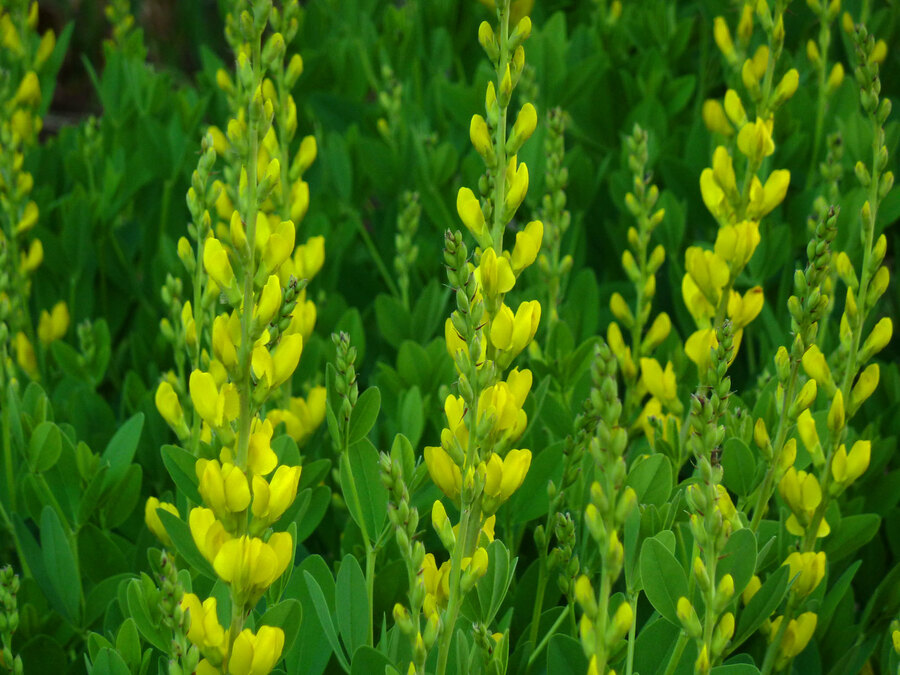
| Common name | Baptisia, false indigo, wild indigo |
| Botanical name | Baptisia sphaerocarpa |
| Family | Fabaceae |
| Plant type | Herbaceous perennial, native plant, poisonous |
| Mature size | 3-4 feet tall and 3-4 feet wide |
| Native range | Eastern Canada to Central USA |
| USDA hardiness zone | 5a, 5b, 6a, 6b, 7a, 7b, 8a, 8b |
| Growth rate | Medium |
| Growth habit | Erect |
Yellow wild indigos are low-maintenance, perennial flowers that start with Y in the Fabaceae family. It is hardy to USDA hardiness zone 5 to 8 and thrives best in full-sun locations.
10. Yellow-eyed grass (Sisyrinchium californicum)
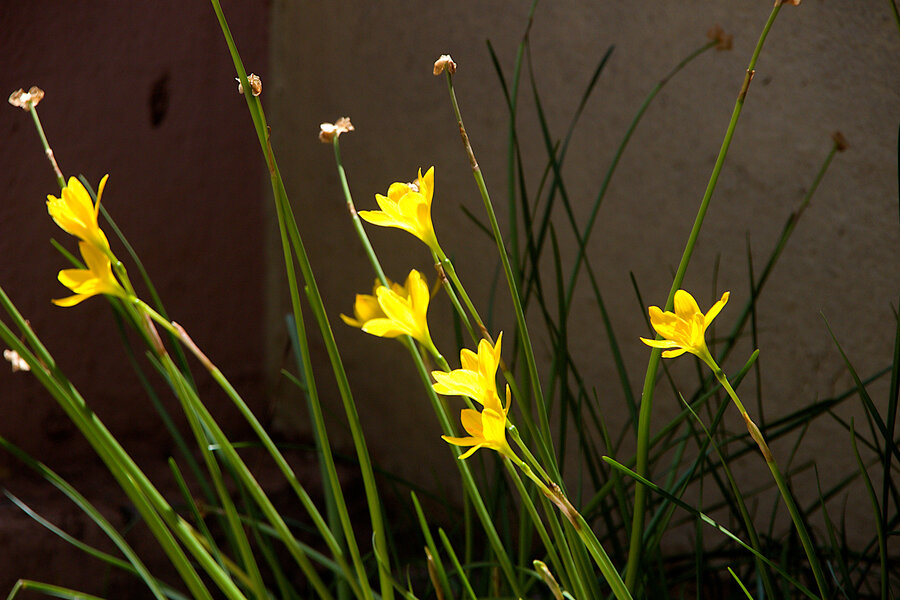
| Common name | Californian satin flower, yellow-eyed grass, golden blue-eyed grass |
| Botanical name | Sisyrinchium californicum |
| Family | Iridaceae |
| Plant type | Herbaceous perennial |
| Mature size | Grows to 6 inches to 2 feet tall and 8 inches to 10 inches wide |
| Native range | Western United States |
| USDA hardiness zone | 7a, 7b, 8a, 8b, 9a, 9b, 10a, 10b |
| Growth habit | Clump-forming |
| Growth rate | Medium |
Yellow-eyed grass is a low-maintenance, clump-forming perennial with grass-like pale green leaves. From late spring to mid-summer, a profusion of tiny star-shaped flowers appears atop straight stems that last only a day.
These small bright yellow flowers that start with Y look stunning along with lance-shaped leaves and add interest to rock gardens.
Frequently Asked Questions (FAQ) on Flowers that Start with Y
What are the flowers that start with Y in their scientific name?
Yucca x floribunda: This hybrid is a herbaceous perennial of the Asparagaceae family. Foliage appears sword-shaped and tall panicles of white bell-shaped flowers.
Yucca gloriosa ‘Variegata’: Also known as variegated Spanish dagger, this evergreen Yucca species features an attractive rosette of dark green sword-shaped leaves with creamy white variations at the edges.)
Yucca recurva: This classic Yucca plant offers huge spikes of white flowers that perfectly complement the recurved glossy green leaves.
What are the flowers that start with X or Y?
The flowers that start with X are:
Xylobium (Orchid)
Xanthoceras sorbifolium (Yellowhorn)
Xylosma
Xeranthemum (Strawflower)
While the flowers that start with a Y are:
Yellow-eyed grass: This is a semi-evergreen perennial that displays spikes of pale yellow flowers with golden yellow centers. These small flowers last for only one day, opening with morning sunlight and closing at dusk.
Yellow pitcher plants: This carnivorous perennial prized for its yellow-green pitchers and yellow flowers with intense musty fragrance.
Yucca: These are the look-alikes of dragon and agave plants and are native to Mexico and the Caribbean. These plants are grown for their bell-shaped, white-colored flowers.
What are the flowers or plants that start with Y?
The flowers that start with the letter Y are:
Yews
Yarrow
Yellow coneflower
Yellow pitcher plant
Yellow-eyed grass
Yellow daylily
Image credit: Depositphotos, Flickr, Wikimedia
